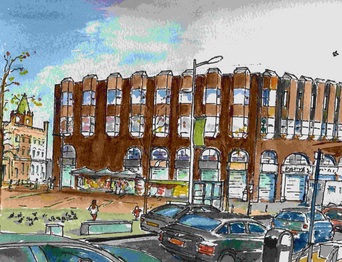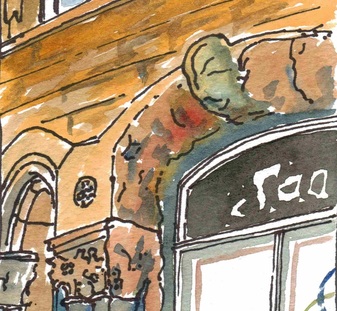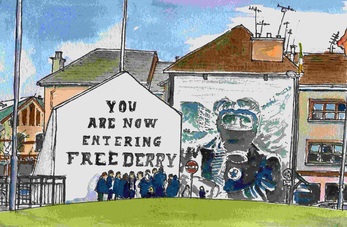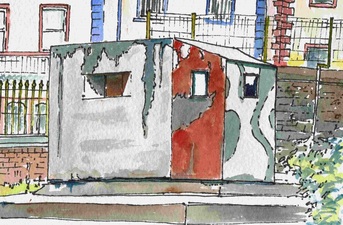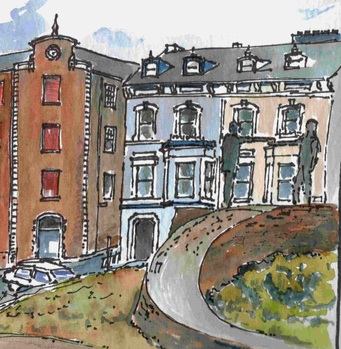The troubles
|
By 1970, things had deteriorated in the city. Civil Rights Marches had led to riots, counter riots, the deployment of the Army and the commencement of the IRA bombing campaign. Northern Ireland descended into 30 years of strife which at times appeared unending. The city, which had been largely unchanged from the Edwardian period, was very badly damaged by bomb attacks. Plenty of historic buildings were lost to be replaced by cheap and quick replacements that perhaps display a lack of confidence in the length of time that they too would last.
Other historic features were permanently damaged. The Commercial Buildings on Foyle Street for example, still bears the marks of a bomb detonated outside it in the early 1980s. Free Derry Corner and the area around it, in the centre of the Bogside, is one of the more noticeable architectural legacies of the period. It is preserved by its surrounding community and along with nearby murals and monuments of varying sophistication, they collectively tell a story, from a particular point of view, of the principle incidents of the period. Elsewhere in the city, other murals and monuments express Unionist and other viewpoints, and record individual deaths and damage. The defensive structures built by the Army and Police which for so long formed the strongest architectural image of full blown conflict within the city are now largely gone. This, in itself, reflects the relative peace that the city now enjoys. This drawing is of an Army sangar which has been retained within the Ebrington Barracks site to help with future interpretation. When used it would have been mounted on a high platform. There were four at Ebrington, one at each corner of the site linked by a high metal curtain wall to provide protection from missiles. The approach would not have been unfamiliar to the Normans. At Carlisle Square, at the entrance to the city. The ‘hands across the divide’ statue at the entrance to the city on Carlisle Square stands out as a representation of the next phase - the search for peace. |
|

